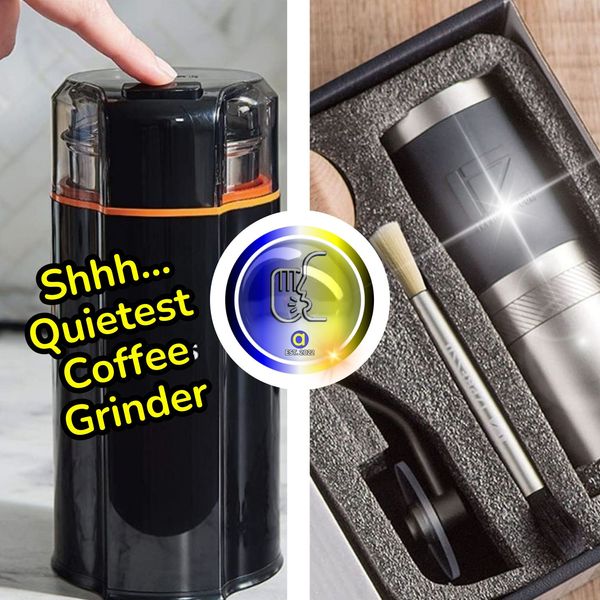Espresso aficionados often debate the impact of grind size on the strength and flavor of their beloved brew. The question, "does finer grind make stronger espresso?" is not just a matter of curiosity but a significant concern for anyone looking to perfect their home barista skills or simply enjoy a better cup of coffee. In this article, we'll dive deep into the world of coffee grounds, exploring how the size of the grind can affect your espresso experience.
The Science of Coffee Grinds and Espresso Strength
When you grind coffee beans, you're essentially increasing the surface area that comes into contact with hot water. A finer grind means that more coffee particles are exposed, allowing water to extract flavor compounds more efficiently. This is why a fine grind is typically recommended for espresso machines, which use high pressure to force water through the coffee.
However, grinding coffee too finely can lead to over-extraction, where too many bitter compounds are released, resulting in an overly bitter and harsh cup of coffee. Conversely, a coarser grind might not extract enough flavor, making your espresso taste weak or underwhelming. Finding the sweet spot is essential for a balanced and robust espresso.
The Role of Espresso Machines in Grind Size
Espresso machines are designed to work best with a certain grind size. Most grinders come with settings that allow you to adjust the grind size to suit different brew methods. For espresso, a finer setting is usually required to create the resistance necessary for the high pressure to extract the rich flavors and create that signature crema on top of your drink.
The type of grinder you use also plays a role. Burr grinders are preferred over blade grinders because they produce more consistent particle sizes. The distance between the burrs determines the size of the coffee particles, and most grinders are calibrated to provide the ideal grind for espresso.
Personal Preference and the Art of Tasting
At the end of the day, the strength and flavor of your espresso come down to personal preference. Some coffee enthusiasts prefer a bolder, more intense cup, while others might enjoy a lighter, more nuanced flavor profile. Experimenting with different grinds can help you discover your own coffee taste preferences.
It's also worth noting that the freshness of your coffee plays a significant role in the taste. Freshly roasted, whole bean coffee will always yield a more flavorful and aromatic espresso than pre-ground coffee, which can lose its potency over time.
The Influence of Particle Size on Extraction
When we talk about grinding beans for espresso, the particle size can make a significant difference in the extraction process. Finer grounds increase the surface area that comes into contact with water, allowing for a quicker and more thorough extraction of flavors. This is why many coffee shop aficionados and baristas lean towards a finely ground coffee for a robust and rich espresso shot. However, if the grind is too fine, it can lead to over-extraction, resulting in a bitter taste that overshadows the nuanced flavors of the coffee.
On the flip side, larger particles from a coarser grind might not extract enough, leading to an underwhelming and sour espresso. The definitive answer to the perfect grind size isn't set in stone, as it often depends on the specific coffee bean's characteristics and the espresso machine's capabilities. The key is to experiment with different grind sizes to find the balance that extracts the best flavor profile for your palate.

Grinding Beans: Pre-Ground vs. Freshly Ground
The debate between using pre-ground coffee and grinding beans fresh is ongoing in the coffee community. Pre-ground coffee offers convenience and consistency, which can be a significant advantage in a busy coffee shop environment. However, the moment coffee is ground, it begins to lose its freshness and aromatic oils, which are essential for a full-flavored espresso. This is why certain brew methods, especially espresso, benefit greatly from freshly ground beans.
Grinding finer just before brewing can make a noticeable difference in the taste and quality of the espresso. Finer grounds mean smaller particles, which can enhance the extraction rate and, consequently, the strength and complexity of the espresso. While pre-ground coffee might work in a pinch, for those seeking the pinnacle of espresso quality, investing in a good grinder and grinding beans right before brewing is the way to go. This practice ensures the freshest, most flavorful shot possible, capturing the essence of the bean in every sip.
The Impact of Brew Time on Espresso Quality
Brew time is another critical factor in the strength of your espresso. A finer grind will slow down the brewing time because the water takes longer to penetrate the tiny particles. This prolonged exposure can lead to a stronger cup of coffee. However, if the brew time is too long, it can again result in over-extraction and an overly bitter taste.
On the other hand, a coarser grind will speed up the brewing process, potentially leading to under-extraction and a sour coffee taste if the water passes through too quickly. Striking the right balance between grind size and brewing time is crucial for achieving the perfect espresso shot.
Different Brew Methods and Their Grind Preferences
Not all coffee brewing methods are created equal, and each has its own preferred grind size. For example, a French press typically requires a medium coarse to coarse ground coffee, while Turkish coffee calls for an extra fine grind. Understanding the specific needs of your brewing method will help you choose the right grind size for your coffee.
Cold brew and drip coffee maker methods also have their own grind preferences. Cold brew usually works best with a coarser grind to prevent over-extraction during the long steeping process, while drip coffee makers often call for a medium grind to ensure even extraction and a balanced flavor.
Finding the Sweet Spot for Your Espresso
The key to making a strong and flavorful espresso lies in finding the sweet spot for your coffee grind size. This involves considering the type of espresso machine you have, the brewing time, and your personal taste preferences. It's a process of trial and error, but once you find the right setting on your coffee grinder, you'll be able to consistently produce a cup of coffee that meets your standards.
Remember that the finer the grind, the more surface area is exposed, and the stronger and more flavorful your espresso can be. But always keep an eye on the extraction process to avoid a brew that's too bitter or too weak.
Summary
In conclusion, a finer grind can indeed make a stronger espresso, but it's not just about grinding coffee beans as finely as possible. It's about understanding the relationship between grind size, espresso machines, and brewing time to achieve the perfect balance. Personal preference also plays a significant role, and experimenting with different grinds will help you find the flavor profile that's right for you. Remember to use freshly roasted, whole bean coffee and a quality grinder to get the best results.

FAQ Section
Q: Can I use a blade grinder for making espresso?
A: While you can use a blade grinder, a burr grinder is recommended for more consistent and precise grind sizes, which is crucial for making good espresso.
Q: How do I know if my espresso is over-extracted?
A: Over-extracted espresso often tastes overly bitter and lacks the complexity of a well-balanced shot. If your espresso has a harsh, bitter flavor, you may need to adjust to a coarser grind or shorten the brewing time.
Q: Is it worth grinding my own coffee for espresso?
A: Absolutely. Grinding your own coffee ensures you're using the freshest grounds possible, which can significantly improve the taste and strength of your espresso.
RELATED: Articles Catering to Espresso Lovers |
Best Espresso Machines Under $200





